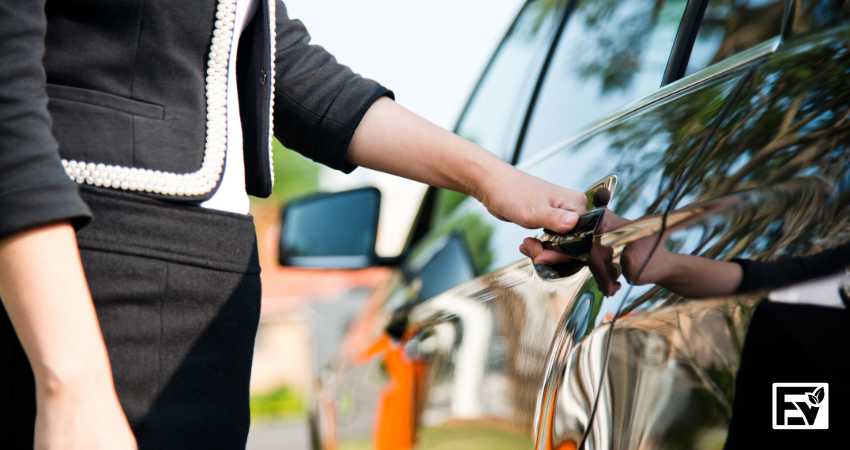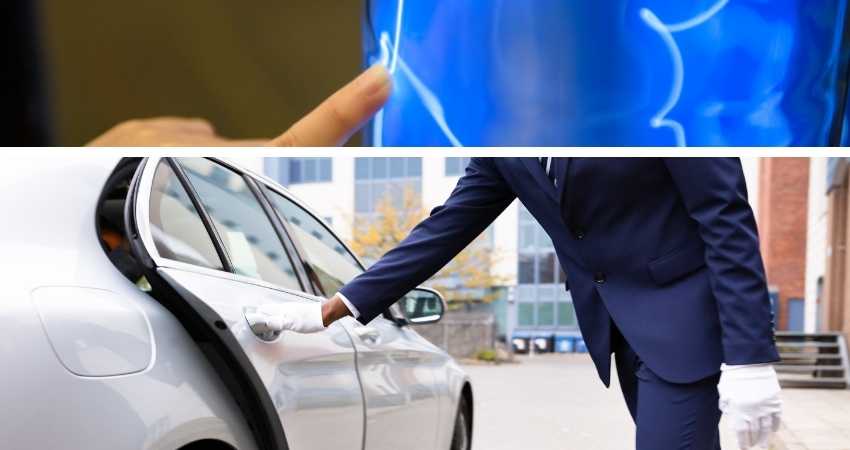The annoying short-lived electric shocks might occasionally haunt you when you touch your electric car door. You yelp every time you are zapped, wondering why this ordeal occurs. There are only two ways your car ‘shocks’ you: due to an electric charge or current leakages.
Electric car doors give electric shocks when the static charge built in our clothes leaves quickly through us to the ground. Similarly, if there is a current flow in the car frame from the battery, electric shocks—dangerous ones—can occur. However, it is highly unlikely.
Electric Car Door Giving Shocks: Reasons and Solutions Explained
The Static Charge
Cause
When the static charge stored in our clothes leaves quickly through any conductor, we feel electric shocks. In this case, the conductor is the metal door of an electric car.
We can build the static charge on our clothes when we get into or out of a car. As we slide on the seat, some charge from the cover fabric can make its way into our clothes, giving us a net positive charge. This charge remains static and does not leave the clothes unless it gets a path leading to the ground. The metal door of an electric car provides this path. When we touch it, the charge quickly leaves our clothes through our bodies (which are also good electricity conductors) into the door. The door is ultimately connected to the ground via the car frame and the tires, discharging our clothes instantly. This sudden and violent flow of charge produces shocks. The point in our body that makes the first contact and completes the circuit is where we feel the electric shock, mainly the hand.

The shocks due to static charge occur primarily in winter. With the loss of moisture in the air, it is easier for the charge to build up on any surface. The charge, even if built, might move off quickly in summer due to moisture.
| Fact!
The shocks from a car’s door can be too shocking during cold days: they can cross 300 volts! However, they do not harm us because they are too short-lived. |
Current Leakage
Cause
An electric car door or any other metal part can give shocks if there is any current leakage from the battery. If there is any short wire or direct connection between the car frame and the battery, the electricity will prevail in the whole car. Unlike the shocks from static charge, such shocks can be very dangerous or even fatal since the toucher receives up to 800 volts of direct current.

However, note that such a scenario is highly unlikely. The electric car designs and engineering is so first-rated and sophisticated that shock risks are almost non-existent. The intelligent system can even cut off the battery power supply when an electric car submerges into the floodwater.
Fix
Rely only on a pro to get the solution for current leakages in your electric car. Tweaking it yourself might be risky. We recommend that when you experience such shocks, halt using your vehicle immediately and have it checked before riding again. You can confirm that the shocks come from the battery if they are longer-lasting and severely painful.
How to Fix Electric Car Doors Giving Shocks
1. Let the Charge Flow Smoothly
Hold on to some metal part of your car as you move out. This will let the charge flow right into the ground as soon as it builds due to your clothes sliding against the seat fabric. This way, your body will get discharged soon before you touch the door, and no ‘violent’ flow will occur—saving you from shock.
2. Take Help from Less Conductive Materials
If you touch your electric car’s door through a material that is a conductor of electricity but not so good at it, you can slow down the discharge speed considerably. You can use a coin to touch the door after you have left the car. You might see that spark, but it will not hurt. Similarly, you can also touch the window glass. It will let the charge pass to the ground rather gently.
3. Wear Leather Shoes
Leather shoes can discharge you as soon as you put your foot on the ground. Commonly used shoes, such as those with plastic or rubber soles, insulate you and do not let the charge flow from your body. On the other hand, leather shoes ensure no shock occurs, thanks to their conductivity.

4. Manage the Contact Between the Clothes and the Seat
Fabric softeners can help the static charge leave the clothes very smoothly. When the clothes are adequately lubricated, they dispel electricity very easily, reducing the chances of shocks
5. Cover Your Hands
By wearing gloves, you can block the path of static charge leading to the ground. Preferably, get the gloves to have rubber material in them to ensure they are least conductive to electricity. This way, even if your clothes are charged and you touch your car’s door, no direct contact with the ground (with zero potential) will establish.
Read: Why Does Electric Car Steering Give Electric Shocks? Everything You’ve Got to Know!
Can Door Shocks Damage My Electric Car?
If the shocks are from static charge, no; if they result from current leakages, yes. Static charges are so short-lasting that they neither harm a car nor its passengers. However, they are still strong enough to destroy unprotected circuits such as the car remote. We recommend never touching your car’s key (if they have a remote mounted on them) with the door; if the shock occurs, the circuitry inside might blow out.

Conversely, high voltages from the battery current are powerful enough to destroy all sophisticated electronic components in an electric car.
Concluding Remarks: Why Does My Electric Car Door Gives Electric Shocks?
Your electric car door gives you electric shocks when you touch it because of the static charge in your clothes, leaving you quickly to the ground. The other highly improbable cause could be the current leakages from the battery. If the former is your case, know that it is a problem with all cars and can be solved through simple precautions. However, if the latter is your case, you need to get your car fixed by a mechanic to avoid any danger.


